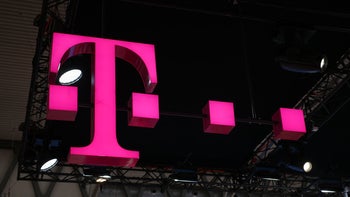T-Mobile has a plan to temporarily hike the speed of its 4G LTE and 5G networks during the crisis

The other day, we told you that Dish Network will lend all of its 600MHz low-band spectrum to T-Mobile at no charge. Now, it appears that the carrier is renting additional 600MHz spectrum (Band 71). While the low-band airwaves travel farther and penetrate structures better than high-band spectrum, the amount of traffic they can carry is smaller. With the coronavirus forcing adults to work from home and students to stream virtual lessons, T-Mobile expects demand for its network capacity to rise sharply causing traffic bottlenecks and slower data speeds.
To prevent excess traffic from slowing its 4G LTE data speeds, T-Mobile is borrowing 600MHz spectrum to increase capacity
By renting the additional 600MHz spectrum, T-Mobile will increase its 4G LTE capacity allowing those working or studying from home to experience faster data speeds than they might have otherwise had to deal with. And with T-Mobile possibly using the borrowed 600MHz holdings for both 4G LTE and 5G, the additional airwaves are very much welcome especially in markets where it can be quickly put to use. The companies loaning the spectrum to T-Mobile include Bluewater; Channel 51; Comcast; Dish; Grain Management affiliate NewLevel, LLC; LB Holdings and Omega Wireless, LLC. This list includes half of the 10 largest holders of 600MHz spectrum in the U.S. The spectrum will be borrowed by T-Mobile for a period of 60 days.

T-Mobile is borrowing low-band airwaves to prevent a slowdown in 4G LTE data speed
T-Mobile has also expanded its roaming deal with merger partner Sprint. Schools, families and rural Americans who are Sprint subscribers will have access to T-Mobile's 4G LTE network, also over the next 60 days. This will also help those Sprint subscribers who live in rural areas. Once the merger with Sprint closes, T-Mobile will obtain Sprint's 2.5GHz mid-band spectrum allowing it to sharply expand the capacity of its 5G network; it will also give T-Mobile the capability to cover more rural Americans with 5G signals. Obtaining these airwaves from Sprint has always been the reason for T-Mobile's interest in merging with the wireless operator, at least in the current iteration of the deal.
T-Mobile's president of technology, Neville Ray, said, "In trying times like this, we understand how important it is for people to remain connected – to family and friends, to resources and information, to their jobs via teleworking or schools via virtual classrooms. And we take our responsibility to keep our customers connected incredibly seriously. We can’t thank these partners and the FCC enough for coming together to provide people across the country with the critical connectivity they’re relying on right now."
Ray thanked the FCC because the regulatory agency is rushing certain decisions and bending some regulations to allow T-Mobile to temporarily get the use of the additional spectrum. T-Mobile originally obtained its 600MHz holdings back in 2017 when it spent nearly $8 billion dollars during an FCC auction for 31MHz of what has been described as the mobile equivalent of beachfront property. Dish spent $6.2 billion during the same auction but has been criticized for simply holding on to its spectrum without using it. Comcast was also a big winner during the auction.
As we pointed out, 600MHz airwaves travel farther and penetrate buildings better than high-band signals. However, high-band spectrum will deliver faster data speeds, offer more capacity, and feature low-latency. The characteristics between the two explain why Verizon's 5G network, which uses high-band mmWave spectrum, averaged a download data speed of 722.9Mbps during a recent road test conducted by Open Signal. T-Mobile, while the only U.S. carrier to offer a nationwide 5G network, produced an average download data speed of 47.5Mbps from its 600MHz 5G network during the same test. Yes, that is about the same speed that is available on 4G LTE networks. But analysts believe that once T-Mobile combines its low-band spectrum with Sprint's mid-band airwaves and adds more mmWave signals, it will become the fastest 5G wireless provider among U.S. carriers.
T-Mobile will probably use the additional 600MHz capacity on 4G LTE since there aren't as many 5G users just yet. The goal is to keep consumers' connected devices running at faster speeds while they are forced to do work from home. Thanks to the additional spectrum, T-Mobile will be able to increase its 600MHz 4G capacity by up to 600%. While the 600MHz band is 35MHz x 35 MHz (for downloads and uploads), in some markets, T-Mobile's 600MHz spectrum is only 10MHz x 10MHz. This could be distributed as 5 x 5 for 4G and 5 x 5 for 5G. Considering that 90% of T-Mobile's customers are currently using 4G LTE, it makes sense for the carrier to use the additional capacity for LTE. But some believe that T-Mobile could use the borrowed airwaves to expand its 4G LTE capacity to 20MHz x 20MHz while hiking its 5G capacity to 15MHz x 15MHz.










Things that are NOT allowed: